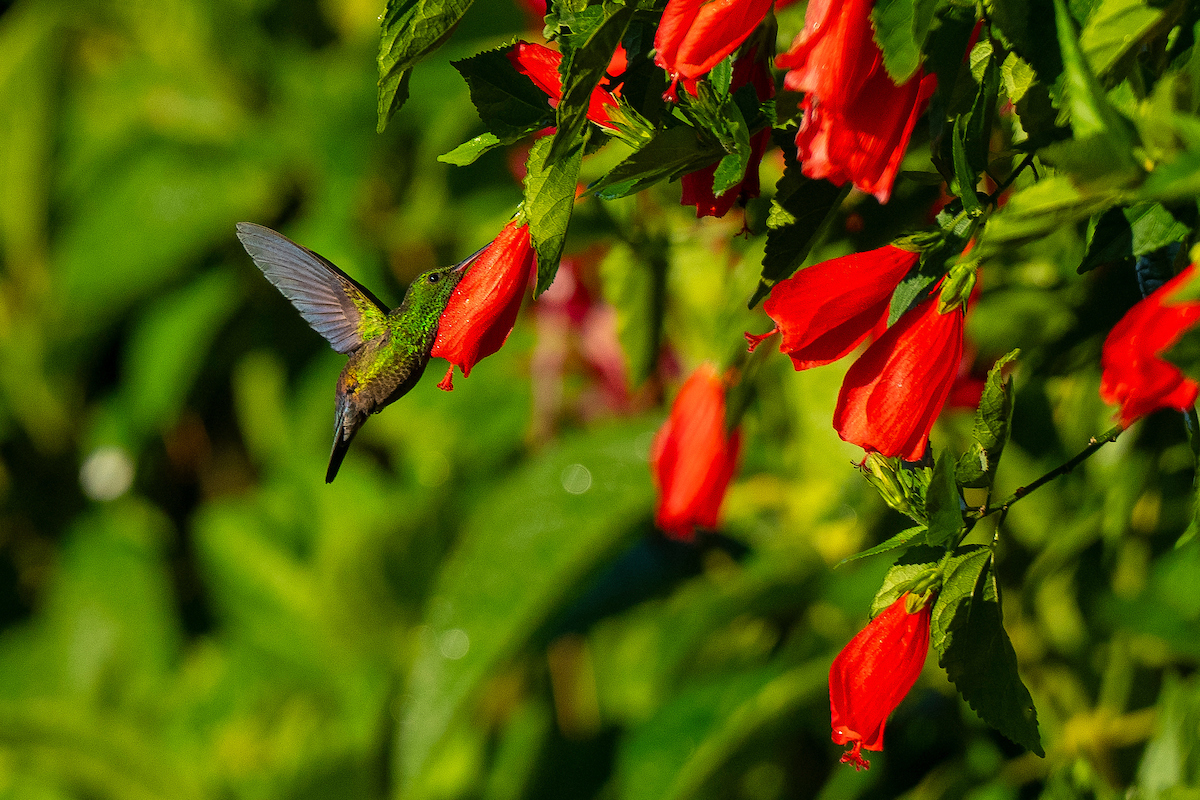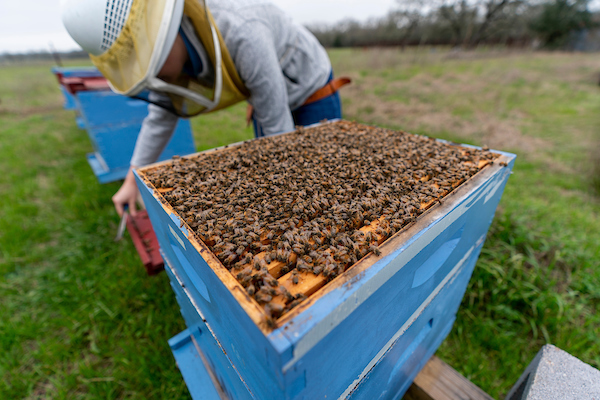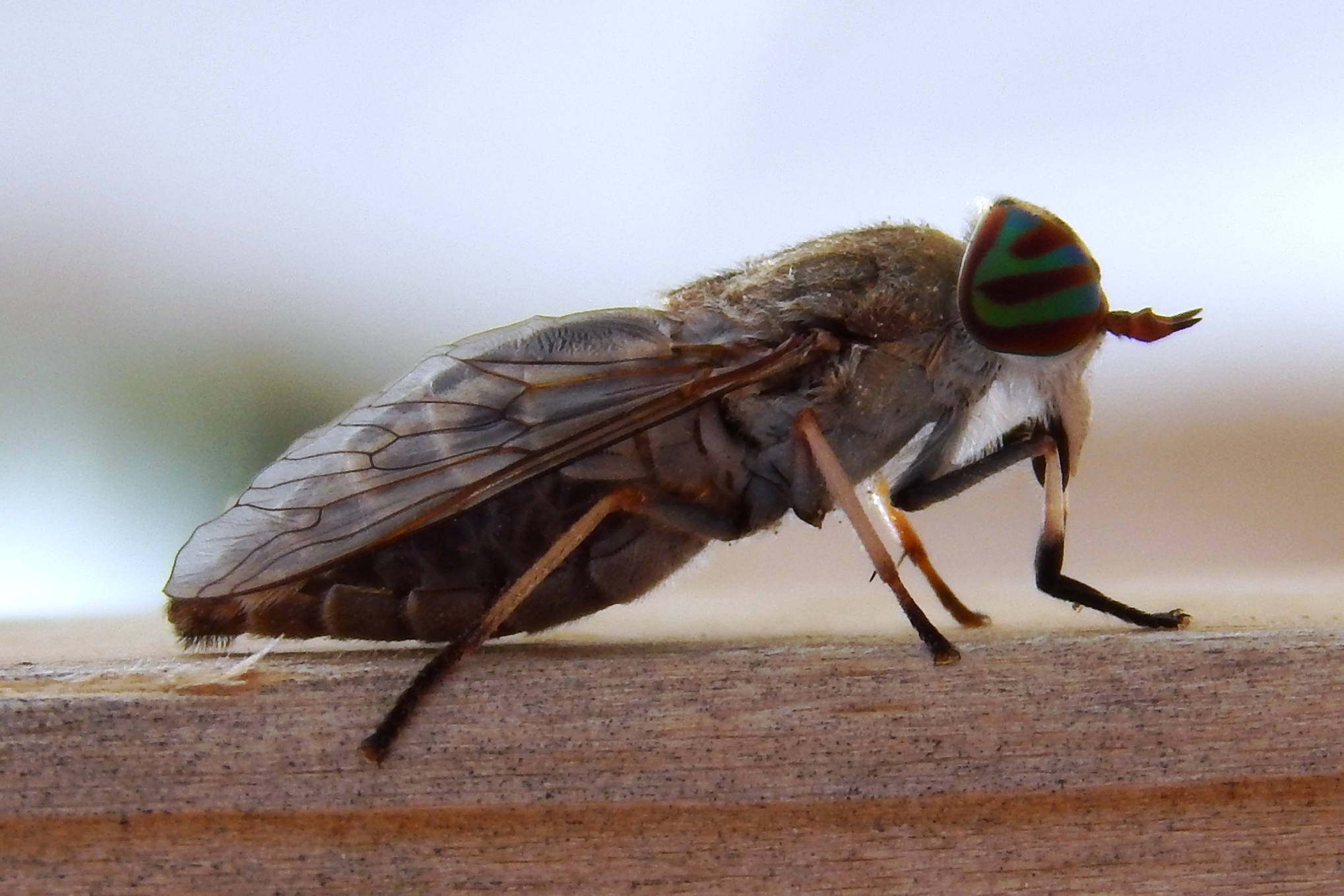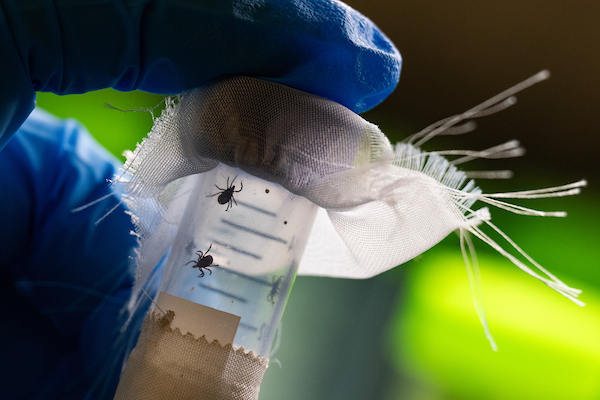Spring is the time to put out hummingbird feeders
Learn from experts how to get the most out of your hummingbird feeder
It’s spring and you’re probably noticing hummingbirds beginning to fly around your garden. If you’re interested in attracting more hummingbirds, a Texas A&M AgriLife expert offers some research-backed tips for bringing more of these adorable birds to your porches and gardens.

According to Emily Grant, Texas A&M AgriLife Extension Service agricultural and natural resources agent for Val Verde County, hummingbird feeders can be kept out all year long in Texas if cared for properly. But if year-round care isn’t for you, now is the time to go ahead and put out your feeders and maintain them through the spring and summer months.
Grant, who works closely on the Birding with Extension programs, works to connect people with the land through the experience of birding—the act of seeking out birds and observing them. You could say she’s an expert at seeking out and attracting birds.
When to put out your hummingbird feeders
Hummingbirds are migratory birds, so where you are in the state, or the nation, influences exactly when you should put up a feeder for maximum effect. As a rule of thumb, Grant suggested putting out feeders a week in advance of the hummingbirds’ arrival. In Texas, that is generally around the beginning of March.

The Davis Mountains have the greatest diversity of hummingbirds in the state of Texas.
If you would like a better idea of when hummingbirds might be close to you, eBird.org keeps track of their typical patterns and sightings.
For some hummingbird lovers, keeping a feeder up year-round is not always a bad idea, particularly in warmer climates.
“You just never know if you may be the lucky one who gets to help feed an overwintering hummingbird all winter long,” said Beth McBroom, one of Grant’s Birding the Border participants and hummingbird enthusiast.
Preparing sugar-water for hummingbird feeders
To attract hummingbirds time and time again to your feeder, Grant suggests a solution of four parts water to one part table sugar.
Grant explained that it is important to mix up small quantities of water every day or two. There is no need to boil the water if mixing small quantities at a time. However, if making a larger batch, go ahead and boil that water for storage.
“We want to put in enough sugar water for a day, maybe two, and then refresh it, only putting in enough liquid for them to drink during that time frame in order to keep it fresh,” said Grant.
Especially during peak season, it is too hot to leave the juice in there for more than a day or two because it will spoil in the heat and could make the hummingbirds sick.
“The potentially bad thing for you beyond just spoilage,” McBroom said, “is if they taste that spoiled sugar water, they are not going to come back to that flower, or feeder, because it tastes bad. They will remember that is a nasty flower.”
What NOT to do for your hummingbirds
“Never use anything fancy, just use plain white sugar and no coloring in the liquid,” McBroom said. “The coloring on the feeder is enough to attract the birds. And the easiest and most economical thing to use is the sugar out of your pantry.”
It is important that birders remember not to use honey or any alternative sugars when filling feeders.
“When we use honey, we tend to see a lot of bacteria and fungus that will begin to grow in there, which is harmful for our birds,” said Grant. “And contrary to popular belief, there is no need to use red dye; it’s actually recommended against.”
Where should I hang my hummingbird feeders?
Put them where you can see them!
Often, we put feeders out so we can see the birds that are attracted to them, so place them in front of windows that you frequently look out, Grant said.
When placing your feeders, it’s probably best not to place them right on top of each other, or within extremely close proximity to a seed feeder, so the hummingbirds are not trying to guard and protect their own feeder all the time.
“Hummingbirds are a little bit territorial and feisty little birds, so they don’t like to share,” she said.
Also keep in mind the amount of sunlight or shade that may hit the feeder during the day. The more the feeders are in direct, harsh sunlight, the faster the sugar water will spoil, especially during the summer heat.
Supplemental feeding with native flowers for hummingbirds
Another thing you can do is plant native flowers for your hummingbirds.
“Just about any tubular shaped flower, the hummingbirds will love,” McBroom said.
Often when shopping for flowers, the tags on them will have a picture of a hummingbird to show they are hummingbird attractors. Hummingbirds are also pollinators, so if considering a pollinator garden, many of the plants used will be hummingbird friendly. Be sure to look for native plants, as these will support the greatest number of insects and native pollinators.
“You can also buy or create pollinator pots or build pollinator gardens for those who may not want the daily maintenance of a hummingbird feeder; these attract pollinators like hummingbirds, bees and butterflies,” Grant said. “Creating a good pollinator garden is something that can be very effective in supporting all of your pollinators.”
Typical hummingbirds you may see
Depending on where you are located, different hummingbirds may be more likely to visit and be seen at your feeders or in your garden.
In the eastern half of Texas, the ruby-throated hummingbird is most common. Black-chinned and rufous hummingbirds are common in the western half of Texas, while buff-bellied hummingbirds are prevalent in the Rio Grande Valley and along the coast.
So, be sure to keep an eye out as the hummingbirds begin to arrive and enjoy their beauty and personality as they stop for nourishment on your feeders and flowers.





